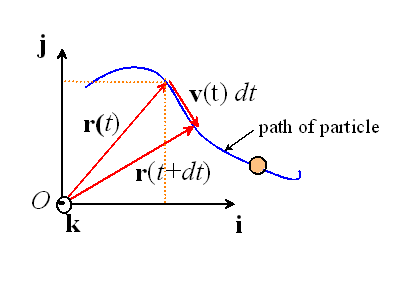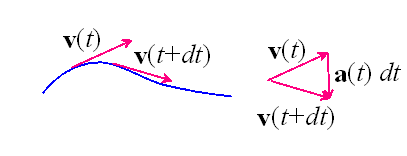
EN4: Dynamics and Vibrations
Division of Engineering
Brown University
2. Motion of Particles
In this section, we will develop techniques to predict the motion of particles. Three issues will be explored: (i) we will formally define measures of position, velocity and acceleration for particles (ii) we will explore techniques for deducing velocity and position, given acceleration and (iii) we will see how to predict the motion of particles using Newton’s laws of motion.
2.1 Vector definitions of position, velocity and acceleration

To describe motion, we first need to adopt an `intertial reference frame.’ This means we agree to take some point in our system as being fixed, and agree on three directions, which do not vary in time. In the picture shown, O is fixed, and the unit vectors {i,j,k} specify three directions which do not vary with time.
Consider a particle, which moves along some prescribed path.
The position of the particle is defined by the position vector r(t), which specifies the distance and direction of the particle relative to the fixed point O. Because the particle is moving, the vector varies with time.
We normally express position vectors as components in a basis, i.e.
![]()
To write down position vectors, follow exactly the same procedure as you used to solve statics problems in EN3.
The velocity of a particle is defined as the time derivative of its position. Derivatives of vectors are defined by exactly the same limit process as derivatives of scalars:
![]()
You can visualize the velocity as follows. Consider the particle shown in the picture above. Suppose that, at time t, the particle is at a position r(t). Now, look at the particle again an instant dt later. Its position is now r(t+dt). The little vector from r(t) to r(t+dt) is v(t)dt, as shown in the picture.
Two very important and useful observations:



